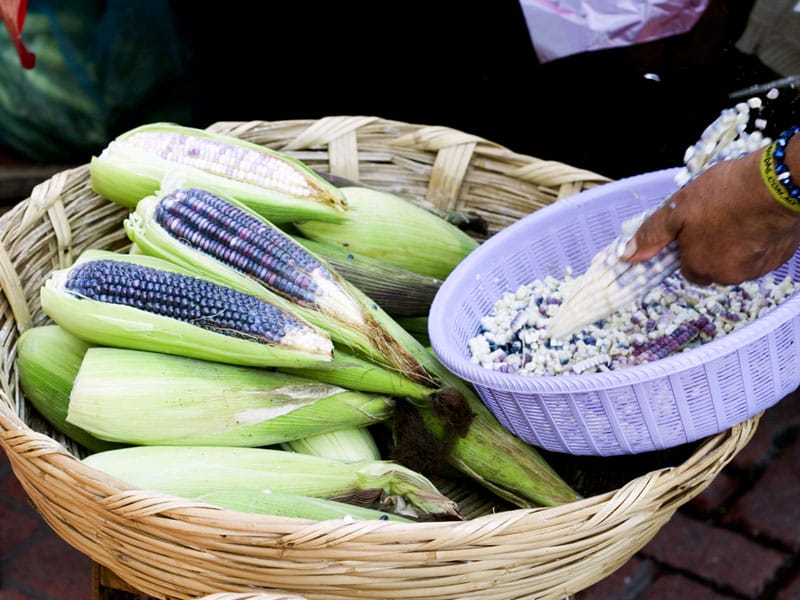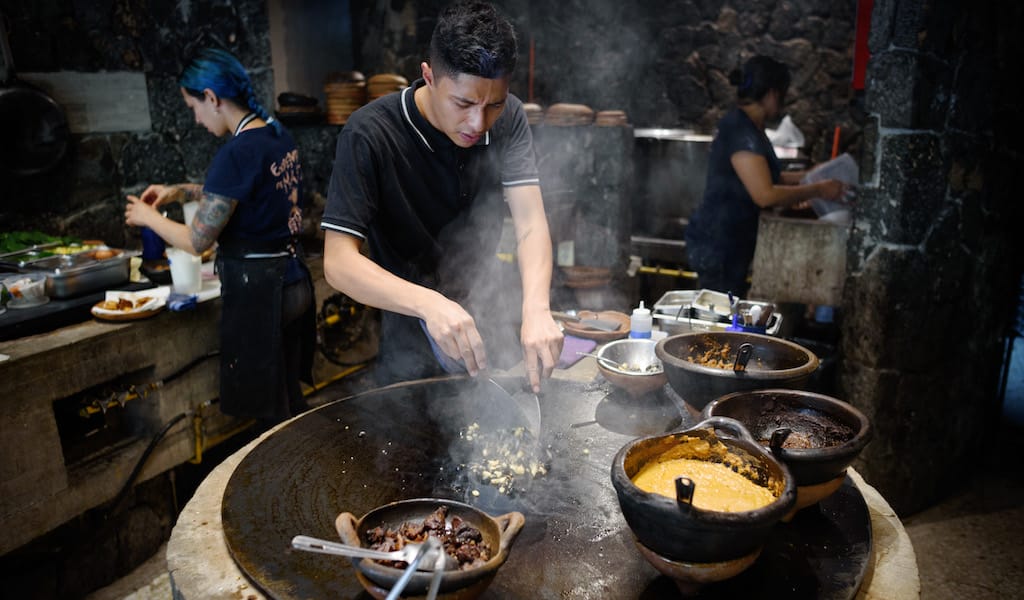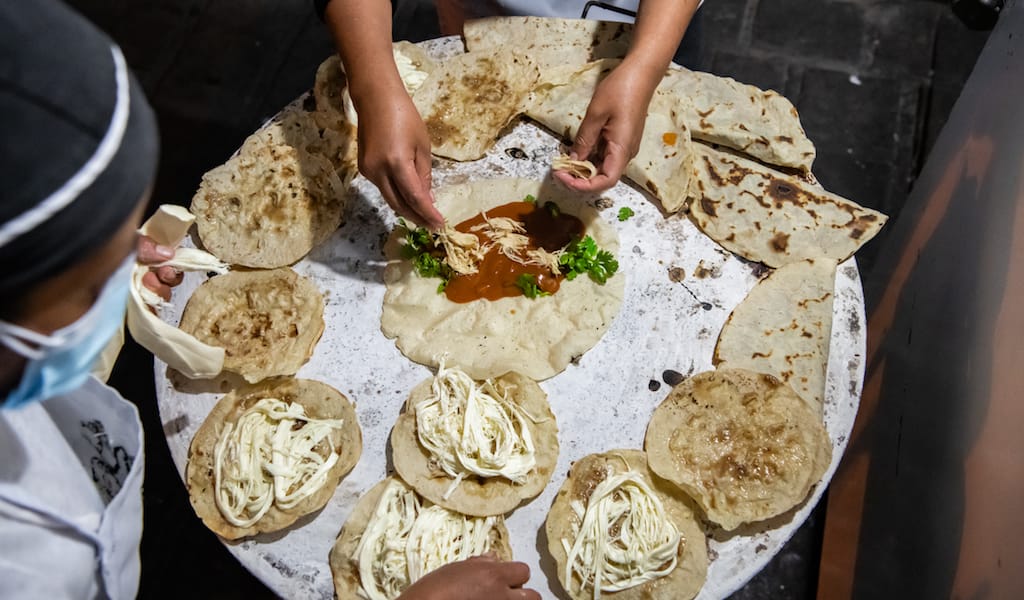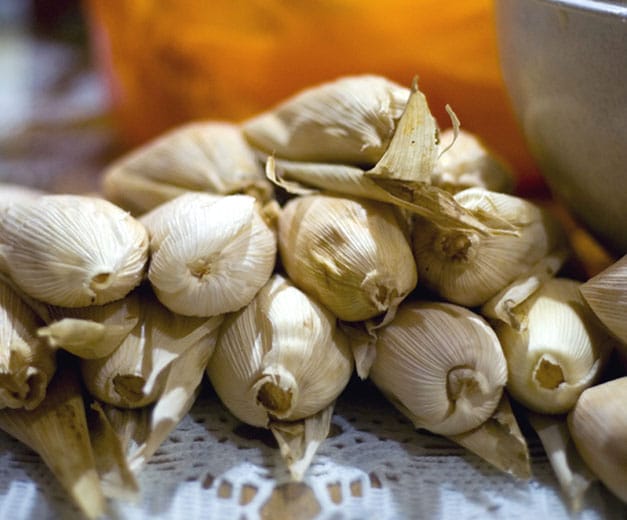Humanity came from corn, or so says the Mayan creation story, the Popol Vuh. After creating the earth and animals, the story goes, the Maker decided to create beings in his likeness. After failing twice with dirt and wood, the Maker formed man and woman out of the “nourishing life” of ground corn. And so began Mexico’s deep relationship with one of the most widely used crops in human history, one that seems to be present in almost every aspect of Mexican cooking.
Corn, or maize, was first domesticated in Mexico about 7,000 years ago, although it is not known exactly by who. It is thought that all corn varieties were originally derived from the teosinte plant, a variety of wild grasses native to Mexico. Teosinte plants don’t look much like their modern-day counterparts, and the seeds that would become the corncob bear greater resemblance to the feathery tufts of a wheat plant. Regardless of its origins, corn had already become an essential food source and part of the fabric of local cultures by the time the Olmecs, Mexico’s oldest known complex civilization, arose around 1200 B.C. The Mayans, as well as the later Mexica (Aztecs), continued to regard corn as a sacred and necessary part of their respective cultures, and many of the traditions and practices related to the crop lived on long after the Spanish conquest.
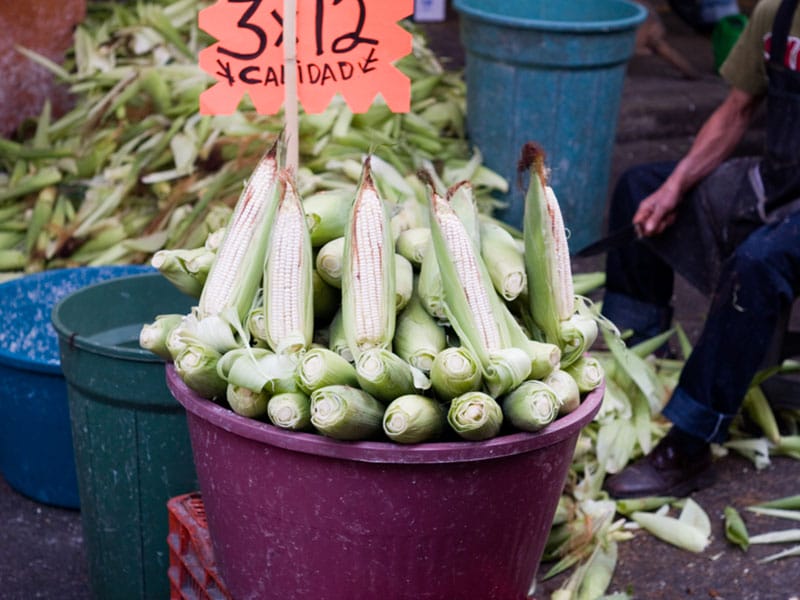
One of the most important practices was the process of nixtamalization. Corn on its own is somewhat nutritionally lacking, so nixtamalization was developed in pre-Hispanic times to increase corn’s viability as a long-term food source. Processing corn involved several steps. First, dried kernels were cooked in an alkaline solution, usually made with crushed limestone, and then dried and hulled. The kernels were then placed in a metate, a mortar or grinding stone usually made from lava rock, and ground into a type of flour. The flour would then be mixed with water to make the base masa that could be formed into things like tortillas or tamales. This processing freed the vitamins in the corn, such as niacin, and allowed them to be absorbed by the body. The alkaline solution also increased levels of calcium, iron and zinc while reducing levels of common types of unhealthy molds that often invaded corn crops. The final benefit was a practical one: it made the kernels easier to grind and improved flavor.
The nixtamalization process is still used throughout Mexico, especially at tortillerías, specialized shops that make and sell tortillas. The difference today is that industrial machines have replaced the metate, drastically saving time and increasing the amount of masa that can be made at any given time. At a tortillería, once the corn masa is ready, it is heaved into a large funnel, where it is formed into balls that are then rolled flat onto a squeaky conveyor belt that winds its way through an oven. At the end of the conveyor, a single person usually removes the steamy and slightly puffed-up tortillas from the belt by hand and slaps them into growing stacks on a nearby table.
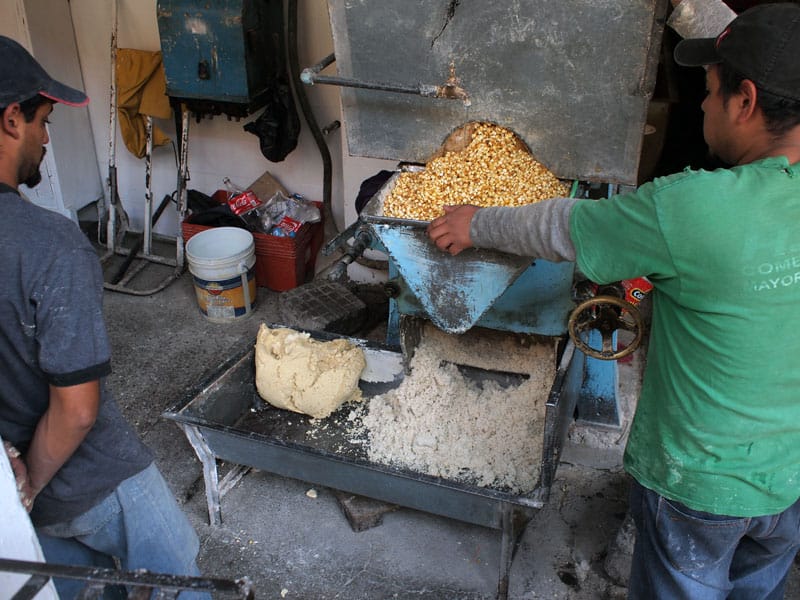
Because the government sets the price of tortillas – a kilo is just about 12 pesos – they are inexpensive and it’s easy to pick up an entire week’s worth in a single visit to a tortillería. Raw corn masa can also be purchased from tortillerías to create sopes, small round patties usually topped with beans, meat and cheese; tamales; or huaraches, which are much larger, oval-shaped sopes. Tortillerías are a vital component of Mexico and Mexico City’s culinary culture, especially for the average home chef. Without them, dishes like enchiladas, quesadillas and even the versatile taco would be much more labor-intensive.
Corn is not always nixtamalized in order to be eaten, however, and is just as popular in other types of dishes, in whole kernel or cob form. For example, around the city on street corners or just outside markets or street fairs, there are often small-scale vendors selling grilled whole corn cobs called elotes. Small square grills are stuffed with chunks of raw charcoal, stoked until red hot, and then the cobs are roasted above on a metal grill. The corn can be eaten plain, but the most popular way is to have the cob stuck on a stick, slathered in mayonnaise, chili powder and shredded cheese, and then splashed with fresh-squeezed lime. A cob-less option is the esquite, which consists of boiled kernels stuffed in a Styrofoam cup and topped with the same ingredients as the elote. These warm, delicious treats are very popular in neighborhoods like Coyoacán, in the southern part of the city. Corn kernels are also often mixed with soups and are a common component of pozole, the rich, flavorful soups that are made throughout the country.
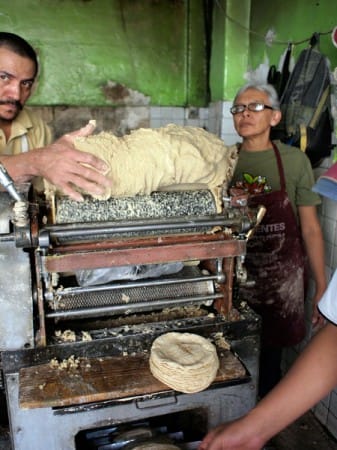 As essential as corn remains in the Mexican diet, different varieties of the crop itself are disappearing. During the time of the Aztecs, native corn varieties were estimated to number in the hundreds, while today there are only about 60 strains left. Fewer and fewer farmers are planting the more obscure and traditional varieties, instead focusing on those that provide the most economic return. Gradually, corn varieties are going out of use or, worse, extinct. (There are groups, such as Sin Maíz No Hay País, or “There is No Country Without Corn,” that are seeking to preserve the important cultural and culinary heritage of Mexico’s native crop as well as working to limit the harvest and import of genetically modified corn.)
As essential as corn remains in the Mexican diet, different varieties of the crop itself are disappearing. During the time of the Aztecs, native corn varieties were estimated to number in the hundreds, while today there are only about 60 strains left. Fewer and fewer farmers are planting the more obscure and traditional varieties, instead focusing on those that provide the most economic return. Gradually, corn varieties are going out of use or, worse, extinct. (There are groups, such as Sin Maíz No Hay País, or “There is No Country Without Corn,” that are seeking to preserve the important cultural and culinary heritage of Mexico’s native crop as well as working to limit the harvest and import of genetically modified corn.)
One wonders what the Maker would make of a people who now have to save the crop that gave them life from their own careless ways.
Molino y Tortillería La Fe is one of our favorite tortillerías in Mexico City to see the nixtamalization, corn grinding and tortilla-making processes up close.
 September 5, 2022 Expendio de Maiz
September 5, 2022 Expendio de Maiz
Tucked against the back wall of the Expendio de Maiz kitchen are three massive metal […] Posted in Mexico City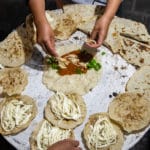 September 29, 2021 Empanadas del Carmen Alto
September 29, 2021 Empanadas del Carmen Alto
Oaxaca’s street food scene has surprises for us every day of the week. From breakfast to […] Posted in Oaxaca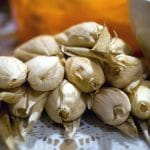 February 2, 2015 Tamales
February 2, 2015 Tamales
As we mentioned in our piece about Rosca de Reyes, February 2 is an important date in […] Posted in Mexico City
Published on March 22, 2013
Related stories
September 5, 2022
Mexico CityTucked against the back wall of the Expendio de Maiz kitchen are three massive metal pots. Containing cloudy mixtures of corn kernels and limestone water, they seem to sit unattended, when in fact intermittent yet constant attention is being paid to their progress. What is happening is one of the most ancient and important processes…
September 29, 2021
OaxacaOaxaca’s street food scene has surprises for us every day of the week. From breakfast to lunch, we can find plenty of stalls with a plethora of options: eggs, tamales, tortas, tacos, hot drinks, juices and more. However, when sunset bathes the streets of the historic center, most of these stalls are disassembled into heaps…
February 2, 2015
Mexico CityAs we mentioned in our piece about Rosca de Reyes, February 2 is an important date in the Mexican calendar - for Candlemas and, relatedly, for tamales. True, tamales are one of the most popular foods in Mexico City, and we can find all kinds of reasons for eating them any day of the week.…







































